Potřebujeme váš souhlas k využití jednotlivých dat, aby se vám mimo jiné mohly ukazovat informace týkající se vašich zájmů. Souhlas udělíte kliknutím na tlačítko „OK“.
ASTM D3433-99(2012)
Standard Test Method for Fracture Strength in Cleavage of Adhesives in Bonded Metal Joints
Automaticky přeložený název:
Standardní zkušební metoda pro pevnost v lomu při štěpení lepidel v celních kovové spoje
NORMA vydána dne 1.10.2012
Informace o normě:
Označení normy: ASTM D3433-99(2012)
Poznámka: NEPLATNÁ
Datum vydání normy: 1.10.2012
Kód zboží: NS-23627
Počet stran: 7
Přibližná hmotnost: 21 g (0.05 liber)
Země: Americká technická norma
Kategorie: Technické normy ASTM
Kategorie - podobné normy:
Anotace textu normy ASTM D3433-99(2012) :
Keywords:
adhesive, bonded joint, cleavage, double-cantilever beam, fracture strength, ICS Number Code 83.180 (Adhesives)
Doplňující informace
| Significance and Use | ||||||||||||||||||
|
5.1 The property G1c (and
G1a if
relevant) determined by this test method characterizes the
resistance of a material to slow-stable or run-arrest fracturing in
a neutral environment in the presence of a sharp crack under severe
tensile constraint, such that the state of stress near the crack
front approaches tritensile plane strain, and the crack-tip plastic
region is small compared with the crack size and specimen
dimensions in the constraint direction. It has not been proven that
tough adhesive systems fully meet this criteria. Therefore, data
developed using equations based on this assumption may not
represent plane-strain fracture values. Comparison of fracture
toughness between adhesive systems widely different in brittleness
or toughness should take this into consideration. In general,
systems of similar type toughness (3, 4, 7, 8, 10) can be compared as can
the effect of environment on toughness of a single system. A
G1c value
is believed to represent a lower limiting value of fracture
toughness for a given temperature, strain rate, and adhesive
condition as defined by manufacturing variables. This value may be
used to estimate the relation between failure stress and defect
size for a material in service wherein the conditions of high
constraint described above would be expected. Background
information concerning the basis for development of this test
method in terms of linear elastic fracture mechanics may be found
in Refs 5.1.1 Cyclic loads can cause crack
extension at G1 values
less than G1c
value. Furthermore, progressive stable crack extension under cyclic
or sustained load may be promoted by the presence of certain
environments. Therefore, application of G1c in
the design of service components should be made with awareness of
the 5.2 This test method can serve the
following purposes:
5.2.1 In research and development to establish, in quantitative terms, significant to service performance, the effects of adhesive composition, primers, adherend surface treatments, supporting adhesive carriers (scrim), processing variables, and environmental effects. 5.2.2 In service evaluation to establish the suitability of an adhesive system for a specific application for which the stress conditions are prescribed and for which maximum flaw sizes can be established with confidence. 5.2.3 For specifications of acceptance and manufacturing quality control, but only when there is a sound basis for specification of minimum G1c values. The specification of G1c values in relation to a particular application should signify that a fracture control study has been conducted on the component in relation to the expected history of loading and environment, and in relation to the sensitivity and reliability of the crack detection procedures that are to be applied prior to service and subsequently during the anticipated life. |
||||||||||||||||||
| 1. Scope | ||||||||||||||||||
|
1.1 This test method(1, 2, 5, 6, 9)2 covers the determination of fracture strength in cleavage of adhesives when tested on standard specimens and under specified conditions of preparation and testing (Note 1). 1.2 This test method is useful in that it can be used to develop design parameters for bonded assemblies. 1.3 The values stated in SI units
are to be regarded as the standard. The values given in parentheses
are for information only.
1.4 This standard does not purport to address all of the safety concerns, if any, associated with its use. It is the responsibility of the user of this standard to establish appropriate safety and health practices and determine the applicability of regulatory limitations prior to use. |
||||||||||||||||||
| 2. Referenced Documents | ||||||||||||||||||
|
Podobné normy:
Historická
1.2.2008
Historická
1.5.2013
Historická
1.4.2011
Historická
1.10.2013
Historická
1.10.2013
Historická
1.4.2011
Doporučujeme:
Aktualizace technických norem
Chcete mít jistotu, že používáte pouze platné technické normy?
Nabízíme Vám řešení, které Vám zajistí měsíční přehled o aktuálnosti norem, které používáte.
Chcete vědět více informací? Podívejte se na tuto stránku.


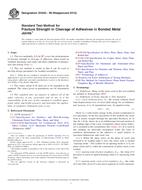
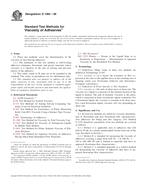 ASTM D1084-08
ASTM D1084-08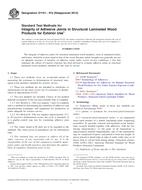 ASTM D1101-97a(2013)..
ASTM D1101-97a(2013)..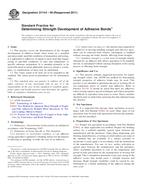 ASTM D1144-99(2011)..
ASTM D1144-99(2011)..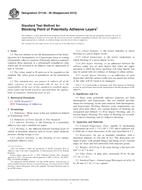 ASTM D1146-00(2013)..
ASTM D1146-00(2013)..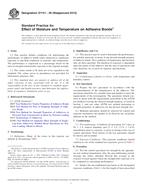 ASTM D1151-00(2013)..
ASTM D1151-00(2013)..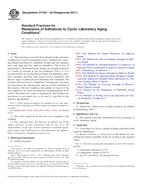 ASTM D1183-03(2011)..
ASTM D1183-03(2011)..
 Cookies
Cookies
